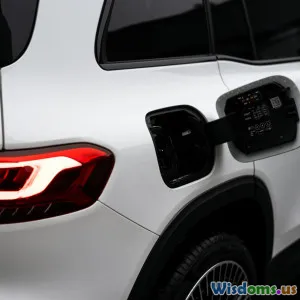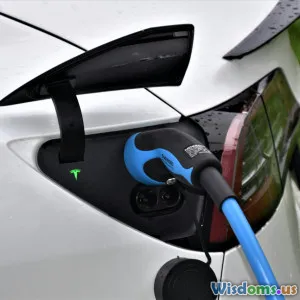
The Evolution of Automotive Design and Tech
6 min read Discover the journey of automotive design and technology, from early inventions to today's cutting-edge innovations. (0 Reviews)
The Evolution of Automotive Design and Tech
Introduction
The automotive industry has undergone a remarkable transformation since the invention of the first motor vehicles in the late 19th century. From rudimentary designs to today's sophisticated electric vehicles, the evolution of automotive design and technology reflects advancements in engineering, consumer preferences, and environmental considerations. This article explores the key milestones in automotive history, the influence of technology on design, and what the future holds for the industry.
The Birth of the Automobile
The late 1800s marked a pivotal moment in transportation history with the introduction of the automobile. Karl Benz's 1886 Motorwagen is widely regarded as the first true automobile. Its design featured a simple chassis and an internal combustion engine, which set the foundation for future vehicles. Early cars were often hand-built and focused more on functionality than aesthetic appeal.
The Rise of Mass Production
The advent of mass production in the early 20th century revolutionized automotive design. Henry Ford's introduction of the assembly line in 1913 significantly lowered production costs and made cars accessible to the general public. This era saw the emergence of iconic designs, such as the Ford Model T, which emphasized simplicity and reliability. Automakers began to focus on not just functionality, but also on style, shaping public perception of automobiles as symbols of status and freedom.
Innovations in Design and Technology
As the decades passed, automotive design increasingly integrated technological advancements. The 1950s and 1960s witnessed the introduction of features like automatic transmissions, power steering, and advanced braking systems. The design philosophy shifted towards aerodynamics, resulting in sleeker, more efficient vehicles. Notable examples include the Chevrolet Corvette and the Ford Mustang, which showcased speed and performance while appealing to consumer desires for sporty aesthetics.
The Digital Revolution
The late 20th century ushered in the digital revolution, fundamentally altering vehicle technology. The introduction of computers in cars paved the way for innovations like anti-lock braking systems (ABS), electronic stability control (ESC), and advanced navigation systems. Moreover, the integration of digital interfaces transformed the way drivers interact with their vehicles. Touchscreen displays, Bluetooth connectivity, and smartphone integration became standard features, enhancing user experience and safety.
Sustainability and Electric Vehicles
In recent years, the automotive industry has faced growing pressure to address environmental concerns. The shift towards sustainability has driven the development of electric vehicles (EVs) and hybrid technology. Companies like Tesla have led the charge, demonstrating that electric vehicles can compete with traditional combustion engines in performance and design. Automakers are now investing heavily in research and development for EV technology, resulting in improved battery efficiency, faster charging times, and longer ranges.
Autonomous Driving: The Next Frontier
As technology continues to evolve, the concept of autonomous driving has emerged as one of the most exciting developments in the automotive sector. Companies like Waymo, Tesla, and traditional automakers are racing to refine self-driving technology. Advances in artificial intelligence, machine learning, and sensor technology are paving the way for vehicles that can navigate without human intervention. While fully autonomous vehicles are still in the testing phase, they promise to revolutionize transportation, enhancing safety and efficiency on the roads.
Future Trends in Automotive Design
Looking ahead, several trends are shaping the future of automotive design and technology:
- Connectivity: The rise of the Internet of Things (IoT) will lead to more connected vehicles, allowing for real-time data exchange and improved driver assistance features.
- Sustainable Materials: Automakers are exploring sustainable materials for vehicle construction to reduce environmental impact.
- 3D Printing: This technology is set to revolutionize manufacturing processes, allowing for rapid prototyping and customization of vehicle parts.
- Urban Mobility Solutions: As urbanization increases, the focus will shift towards creating vehicles designed for shared use and urban environments, such as electric scooters and compact cars.
Conclusion
The evolution of automotive design and technology is a testament to human ingenuity and adaptability. From the early days of the automobile to the sophisticated electric and autonomous vehicles of tomorrow, the journey reflects changing societal values, technological advancements, and the need for sustainability. As we look forward, the automotive industry will continue to innovate, shaping the future of transportation for generations to come.
Rate the Post
User Reviews
Popular Posts




















